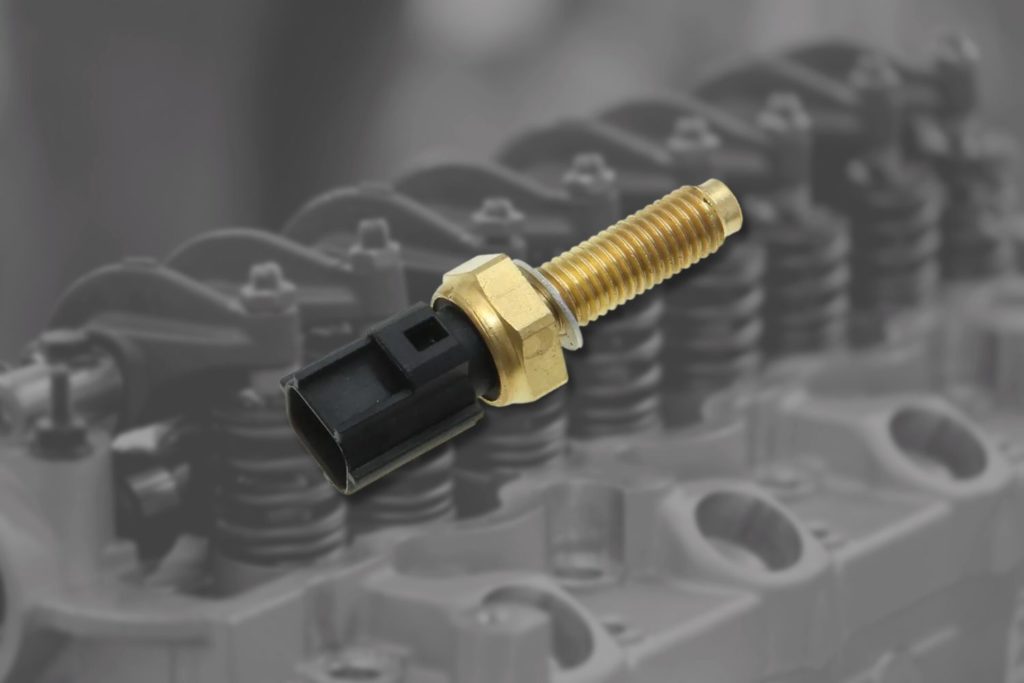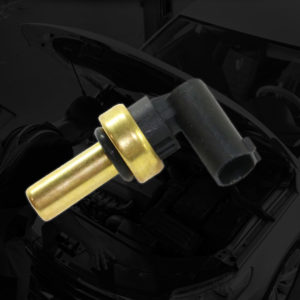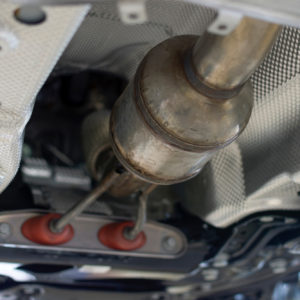Thecylinder head temperature sensor measures the temperature of the cylinder head, the top half of the engine block where the valves are mounted. The cylinder head temperature sensor is a negative temperature coefficient (NTC) thermistor that uses changes in electrical resistance to determine temperature. The voltage from the cylinder head temperature sensor decreases as the temperature increases.
Why Is the Cylinder Head Temperature Sensor Important?
Information from the cylinder head temperature sensor is sent to your vehicle’s powertrain control module (PCM), which helps the engine run smoothly and efficiently. The PCM changes the ignition timing and air-fuel ratio based on the engine’s temperature. The cylinder head temperature sensor also allows the PCM to monitor the engine and determine if it’s overheating.

The cylinder head temperature sensor has an advantage over other engine temperature sensors because the cylinder head temperature sensor takes readings directly from the metal of the cylinder head. As a result, it can give the PCM a more accurate reading of the engine block’s current temperature. Other sensors such as the engine coolant temperature sensor or intake air temperature sensor only provide temperature information from their respective parts.

Cylinder Head Temperature Sensors on Ford Vehicles
The hottest part of the combustion chamber on an internal combustion engine is the cylinder head. In the 1990s, Ford started using cylinder head temperature sensors to keep track of engine overheating concerns.
Most manufacturers don’t use cylinder head temperature sensors. Ford’s Triton system on many of its V8 engines includes this sensor; when the engine is overheating, the PCM will do its best to prevent damage from overheating by killing every other cylinder so that it is pumping air rather than having combustion events, and every so often, it will alternate to the other cylinders. A diagnostic code will be set when this happens.
Fords also have a regular engine coolant temperature sensor, so the CHT sensor isn’t the only input regarding engine temperature.
The cylinder head temperature sensor on Ford V8s is typically on the front inside of the driver side cylinder head. The ECT sensor that measures engine coolant temperature is in the coolant passage at the front of the intake manifold near the thermostat.
Symptoms of a Faulty Cylinder Head Temperature Sensor
A faulty cylinder head temperature sensor can impair the engine’s performance and efficiency. Watch out for the following symptoms:
Illuminated Check Engine Light
Whenever the PCM detects a faulty sensor, it will store a diagnostic code and trigger the check engine light. Keep in mind that many other issues can trigger a check engine light, so make sure to use a scan tool to determine the issue’s root cause.
Decreased Engine Performance
The PCM needs an optimal engine temperature in order to keep the engine running smoothly. But a faulty cylinder head temperature sensor can lead to less power and fuel economy. If the PCM doesn’t receive temperature information from the cylinder head, it might be unable to set the ideal ignition timing or air-fuel ratio.

Engine Cranks Longer Before Starting
The startup process typically involves pumping fuel into the cylinders, cranking the engine, and igniting the fuel. However, a bad cylinder head temperature sensor can affect this process, causing the engine to take longer to start.
The cylinder head temperature sensor might be a small component, but it’s a crucial sensor when it comes to controlling the engine. If you think your vehicle’s cylinder head temperature sensor is malfunctioning, ask a trusted mechanic to take a look.
Any information provided on this Website is for informational purposes only and is not intended to replace consultation with a professional mechanic. The accuracy and timeliness of the information may change from the time of publication.






























